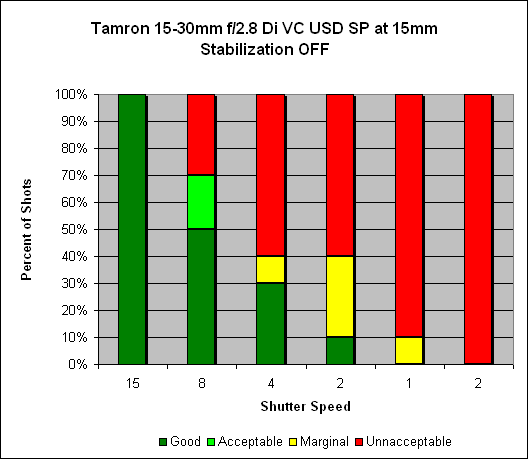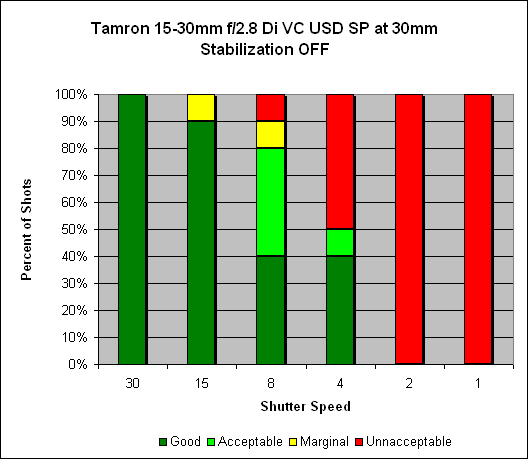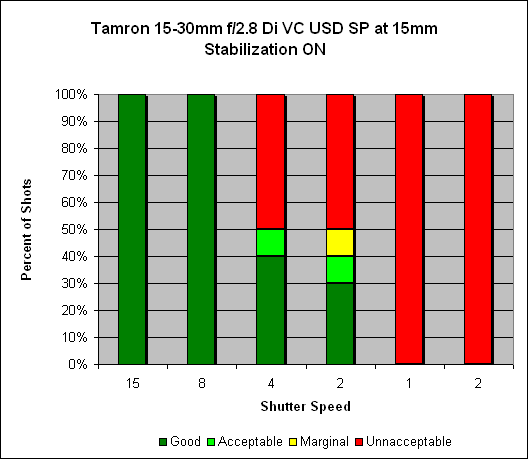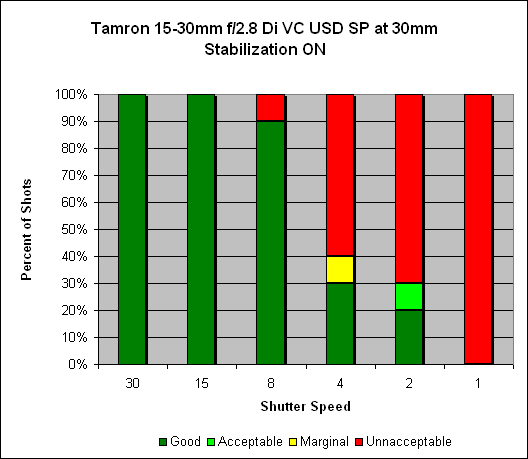Most people tend to think of image stabilization as being mainly for telephoto lenses. While it's true that their longer focal lengths tend to magnify the effects of camera shake, image stabilization can provide a very useful assist at wider angle focal lengths as well; anyone who's ever tried to blur the image of a waterfall, while keeping the surrounding landscape tack-sharp knows exactly what I'm talking about.
It's worth noting that image stabilization isn't as useful for wide-angle lenses because the camera shake induced by hand-holding is more apparent on telephoto lenses than wide angle. That's apparent when we see that Rob kept it very steady at 1/15s: with the Vibration Control (VC) system turned on, he was able to turn 50% sharp shots at 1/8s into 100% sharp shots. There was a very slight improvement at 1/4s, but nothing to write home about.
 |
| Mouse over this chart to show results with IS activated. |
Zoomed in to 30mm, we see only slightly better performance. Here Rob can keep it steady even at 1/15s, with 90% sharp shots without VC enabled. When we turn VC on, he turns his 40% sharp shot rate at 1/8s, into a 90% sharp shot rate.
 |
| Mouse over this chart to show results with IS activated. |
IS systems tend to provide more benefit to less-stable shooters than very steady ones, so most users will see the same or greater amounts of shake reduction as we measured here. You can read more about our IS test methodology here: SLRgear IS Test Methodology, v2.

